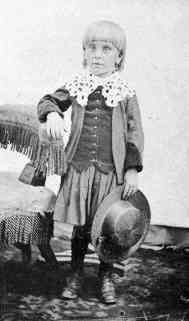
Figure 1.--Occasional images show bangs being worn in the 1870s and 80s. The reklatively limited number of such images, however, suggest that it was not a popular style for boys. |

|
I am not sure just when this hair style first appeared. I have noted boys earing bangs as early as the 1870s. Based on the relatively limited number of images, however, it would seem that bangs were not very popular for boys from affluent families until the turn
of the century. This may, however, be somewhat misleading. I think farm boys throughout the country had their hair cut by their mothers. One common method was to use a bowl to cut a straight line. This led in effect to bangs at the front. These boys in the 19th Century,
however, were probably less likely to have their hair cut.
I'm not sure about the 18th century yet, but do not believe bangs were a common style. I am not sure about boys' hair styles before breeching, they may have worn the same styles as their sisters. After breeching they wore basically the same hair style as their fathers.
Doting Victorian mothers kept their treasured sons in dresses and long curls. I do not believe that bangs were a major hair style for affluent boys in the early 9th century--at least in America. It may have been more common among rural and working-class boys as it was the result of a bowl cut where mothers placed a bowl on their son's head and cut around it. I'm not sure how common bangs were in Europe. Bangs in the 19th century, at least until the 1890s do not appear to have been a stle of their own. They were either tolerated as the opiycome of the bowl cut, or worn with more elabotate styles, like Fauntleroy curls.
|
HBC has insufficient information at this time to assess how commonly bangs were worn during the early and mid-19th century.
The hair do that stylish mothers, especially American mothers, wanted for their sons in the 1880s were ringlet curls. While bangs may have been part of the hair style, it was not the focus of it. Many boys with Fauntleroy long ringlets had the front of their head done in bangs. In a few instances the front bangs themselves might be done in ringlets, although this was not common. Boys who wore bangs instead of ringlets usually had longish hair which fell over their ears. The excetion to this was the boys with bangs resulting from a bowl cut. These boys had their hair well above their ears. A good example of bangs in the 1880s is an American boy, Bert Dodge. He had bangs with a short hair cut. Other boys wore bangs with ringlet curls.
|
HBC has noted both American and French boys wearing bangs in the 1890s, but they were probably worn in other countries as well. American boys mostly wore bangs with their hair cut short off their ears. Boys wearing loig Fauntleroy curls, however, often wore front front bangs. French images from the 1890s show bangs with long hair covering the ears were worn by school-age boys. Ringlets were never very popular in France. Younger French boys still might wear long hair. The bangs cut appears to have been considered appropriate for boys up to about 11 or 12 years of age, perhaps even 13 years of age. Such boys, however, may have been home schooled. HBC is unclear, however, just how common bangs were in France. Available images and fashion magazines do not indicate that it was a major style. The sailor suit was a popular outfit to be worn with bangs in both America and France.
We note boys as well as bangs being worn by boys as well as girls throughout the 20th century. The style of bangs varied over time. There were also differences from country to country. At the turn of the 20th century, boys were less frequently kept in dresses and their hair was cut earlier. It was about this time that front bangs began to appear on boys. The bangs I have noted which appeared at about the turn of the century also had longer hair left over the ear
at the side. I am not sure why bangs began to appear at this time or who promoted the fashion. Perhaps the so called bowl-cut of low-income families had some impact in popularizing bangs. Using a bowl a boys hair could be eavenly cut at home, leaving a front fringe, but the hair cut away
from the ears. Throughout the 20th century bangs varied in popularity. Usually they were considered a little boys' style, but the Beatles help popularize them for teenagers. Boys in the second half of the 20th century thus continued to wear bangs. Often the bangs were not cut sharply bur were worn in an informal shaggy style.
Navigate the Boys' Historical Clothing hair style pages:
[Return to the Main hair page]
[Return to the Main bangs page ]
[Long hair]
[Ringlet curls]
[Hair bows]
[Curls]
[Hats and caps]
[Collar bows]
Navigate the Boys' Historical Clothing Web Site:
[Introduction]
[Activities]
[Biographies]
[Chronology]
[Cloth and textiles]
[Clothing styles]
[Countries]
[Topics]
[Bibliographies]
[Contributions]
[FAQs]
[Glossaries]
[Images]
[Satellite sites]
[Tools]
[Boys' Clothing Home]
